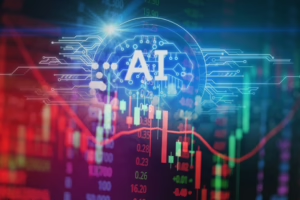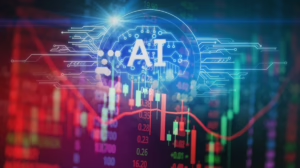From Script to Screen: The Role of AI in Modern Filmmaking
Introduction
The landscape of filmmaking has evolved dramatically over the last century, transitioning from traditional methods steeped in manual labor to increasingly leveraging cutting-edge technology. Among the most transformative advancements shaping the industry today is Artificial Intelligence (AI). From pre-production to post-production, AI is redefining how stories are conceived, created, and delivered. This article explores the multifaceted role of AI in modern filmmaking, examining its implications, benefits, and challenges while offering a comprehensive view of how technology and creativity intersect in the cinematic world.
1. Pre-Production: Scripting and Planning
1.1 Script Development
Screenwriting is an intricate process that can benefit immensely from AI tools. AI applications like ScriptAI and Final Draft utilize machine learning algorithms to analyze existing scripts and generate new ideas, structures, or even entire screenplays. These tools can suggest plot twists or character arcs based on data gathered from successful films, catering to genre preferences and audience engagement metrics.
One notable example is the use of predictive analytics in script evaluation. Systems can analyze screenplays against databases containing thousands of successful films, offering insights into narrative structure, pacing, and character development. By identifying trends and elements that resonated with audiences, screenwriters can refine their scripts more effectively.
1.2 Casting
Casting is one of the most critical aspects of the filmmaking process. AI algorithms can streamline casting by analyzing actor performances through facial recognition and sentiment analysis, predicting which actors might best embody the characters based on previous roles and audience reactions. Tools like Cinelytic use AI to assess actors’ box office appeal—essentially, which stars would bring the most financial success to a project—enabling directors and producers to make more informed decisions.
1.3 Budgeting and Scheduling
Moreover, AI tools have paved the way for smarter budgeting and scheduling in pre-production. Programs can assess historical data on film budgets, factoring in location costs, crew salaries, and other variables to produce accurate projections. This minimizes the risk of budget overruns, allowing filmmakers to allocate their resources wisely.
2. Production: Filming and Directing
2.1 Camera Work and Visual Effects
During the production phase, AI technologies enhance the filming process through automated camera operations and advanced visual effects (VFX). Drones equipped with AI-driven camera systems can autonomously capture stunning aerial shots, allowing cinematographers to execute complex shots previously requiring extensive manpower.
Moreover, AI has significantly impacted how VFX are created. Machine learning algorithms allow for quicker and more realistic rendering of visual effects. Programs like Adobe Sensei analyze vast amounts of visual data, allowing creators to automate tedious tasks such as rotoscoping and motion tracking, making the post-production phase more efficient.
2.2 Performance Analysis
During filming, AI can provide real-time analytics of actor performances. Some studios are employing AI systems that analyze the emotional resonance of a scene by examining facial expressions and body language. This feedback is invaluable for directors, offering them the chance to make on-the-spot adjustments to better achieve the desired emotional impact.
3. Post-Production: Editing and Distribution
3.1 Editing
The post-production edit is where a film truly comes together, and AI is revolutionizing this stage as well. Video editing software integrated with AI capabilities can suggest cuts based on pacing, continuity, and even audience engagement patterns derived from similar films. Tools like Magisto use automated editing by identifying the most compelling shots within the raw footage, significantly speeding up the editing process.
3.2 Color Correction and Sound
AI algorithms can also assist in color grading and sound editing. Machine learning technologies can analyze scenes and automatically suggest color palettes and corrections that would enhance visual storytelling. For sound editing, AI tools can identify auditory elements needing adjustments, ensuring that dialogue and sound effects blend seamlessly.
4. Marketing and Audience Engagement
4.1 Targeted Marketing
AI reaches beyond the film creation process and significantly impacts marketing strategies. By analyzing audience behavior and preferences through their online activity, AI can assist studios in crafting targeted marketing campaigns. Technologies can predict the kind of trailers, posters, and promotional content likely to resonate with specific demographics, maximizing the effectiveness of outreach efforts.
4.2 Predictive Analytics
Predictive analytics can forecast a film’s performance at the box office based on historical data. By examining elements such as genre trends, star power, and audience interests, AI tools provide valuable insights that can guide marketing teams in their strategies.
5. Ethical Considerations
5.1 Data Privacy
While AI offers numerous benefits, it also raises ethical questions, particularly concerning data privacy. The algorithms that predict audience preferences rely on vast amounts of data from users. This reliance on personal information necessitates careful governance to ensure that individuals’ privacy rights are respected.
5.2 Creativity vs. Automation
Another critical concern is the balance between human creativity and AI automation. While AI can dramatically improve efficiency, there is an ongoing debate regarding the extent to which AI should be integrated into creative processes. The risk is that filmmakers may rely too heavily on technology, leading to formulaic outputs devoid of genuine artistic expression.
6. Future Trends
6.1 Interactive Storytelling
The future of filmmaking may increasingly involve interactive storytelling, driven by AI capabilities. Films could evolve beyond traditional narratives, with audiences making choices that affect character outcomes, utilizing AI to personalize the viewing experience based on individual preferences.
6.2 Advanced CG and Animation
The integration of AI in computer-generated imagery (CG) and animation is likely to redefine visual storytelling. AI can simulate realistic movements and environments, enhancing the viewer’s experience while lowering production costs and timeframes.
6.3 Sustainability
AI may also contribute to more sustainable filmmaking practices. Algorithms can optimize sets’ energy use, manage resources more efficiently, and even assist in creating virtual sets that reduce the need for physical construction.
Conclusion
The transition from script to screen is undergoing a remarkable transformation, propelled by the capabilities of AI technology. While the integration of AI in filmmaking brings exciting opportunities for innovation and efficiency, it also necessitates careful consideration of ethical implications and the preservation of creative integrity. As the industry continues to evolve, a collaborative approach, merging human creativity with advanced technology, will be vital in shaping the future of filmmaking.
Through this lens, the medium is not just a reflection of stories told, but a canvas for the endless potential of technology and imagination, forever altering the way we share narratives with the world.
References
- Anderson, C. (2018). The Creative Leap: How AI is Reshaping Film. Journal of Media Technology.
- Bell, T. (2020). Casting in the Age of AI. Entertainment Weekly.
- Cinelytic. (n.d.). AI-Powered Casting and Project Management. [Online resource].
- Fox, J., & Smith, K. (2019). The Future of Editing: AI in Post-Production. Visual Storytelling Journal.
- Ghosh, P. (2021). Ethics in AI and Filmmaking. The Journal of Media Ethics.
- Magisto. (n.d.). Automating the Video Editing Process. [Online resource].
- ScriptAI. (n.d.). Screenwriting Made Smarter. [Online resource].
- Simon, D. (2020). Box Office Predictions Through Predictive Analytics. Forbes.
- Warner, R., & Patel, L. (2021). Visual Effects: The AI Revolution. The Animation Journal.
- Ziegler, A. (2022). Interactive Storytelling in Cinema. New Media & Society.
This is a condensed version of a topic that could extend to a larger scope with detailed case studies and interviews for comprehensive coverage in a longer form.


























Add Comment